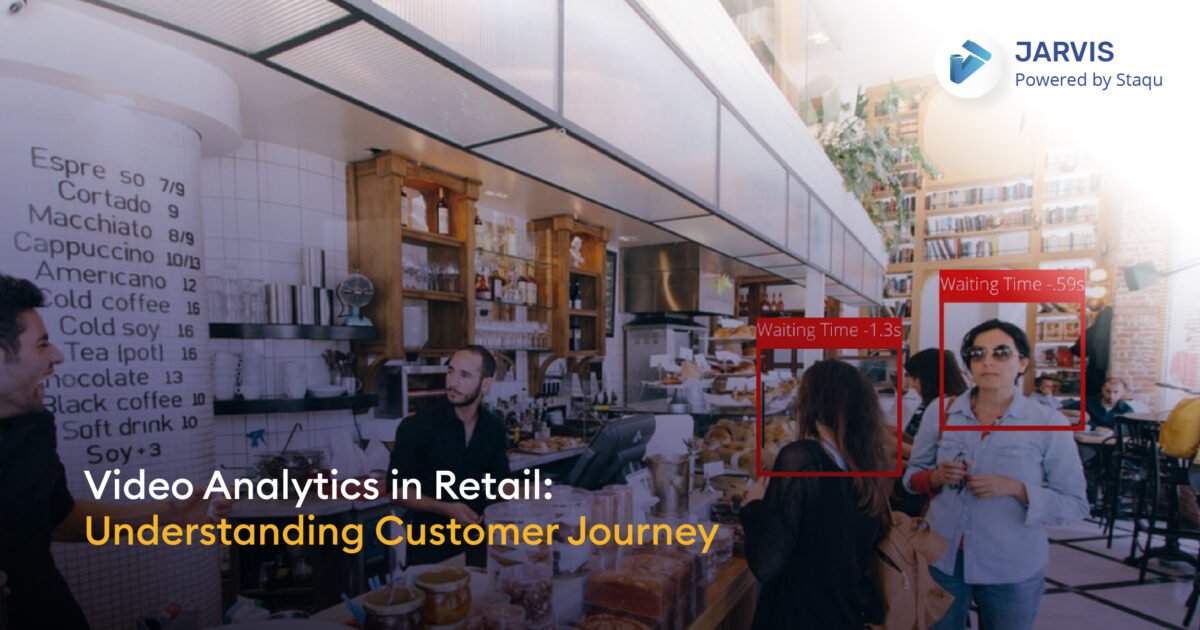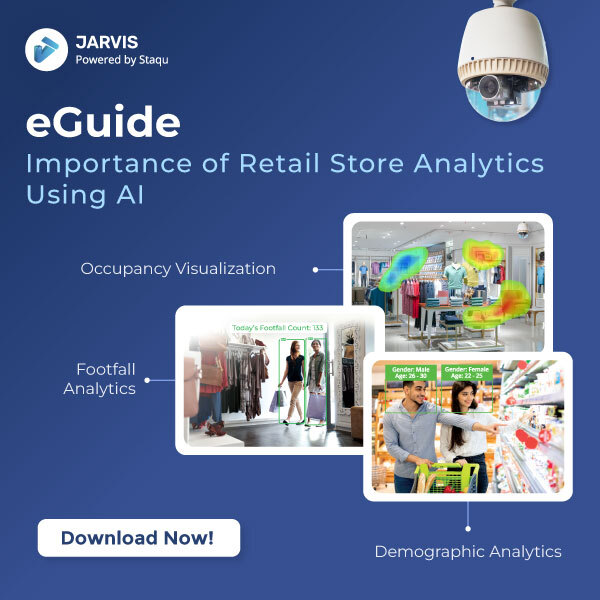Video Analytics in Retail: Understanding Customer Journey

Real-time data into consumer insights helps retailers in data-driven decision-making. One such insight is assessing the Customer Journey in different stores. Currently, the competition of retail stores is with E-commerce which has the luxury of all the data with them. One of the major reasons why E-Commerce websites are winning the retail race is because of their ability to track the daily customer inflows, dwell time, and purchase choices through an automated system. They know exactly what to offer to their customers the next time they open their virtual store.
Therefore, some key customer analytics that is crucial in making important decisions for marketing, operations, inventory control, etc. are not available with the offline stores. Offline stores usually have blind sensors which are unable to give insights like at what time which store receives more footfall, is the store space optimally utilized as per the heatmap analysis, customers are actually visiting some aisles or not, demographics of customers visiting a store, etc. Such type of information is not usually available in traditional brick-and-mortar stores.
AI-enabled Video Analytics is playing a major role in providing E-Commerce traceability into the customer’s inflow, movement, and demography. Gone are the days when CCTV surveillance in the retail industry was limited to reduce losses due to pilferage and employee fraud. Nowadays Video Analytics helps retailers to track customer journeys as well as identify their buying behavior. As per a report, more than a billion cameras were sold last year. Also, Indians sold 30 million CCTV cameras in 2019–20 with a 20% CAGR. Research says that we have more cameras than humans on the earth. So automating CCTV surveillance is certainly beneficial in several ways. And when it comes to the retail industry, video analytics has revolutionized the way offline stores collect customer insights. Studying real-time customer behavior, identifying peak times, traffic patterns, high occupancy zones, reduced waiting time at store, efficient parking or checkout counters, and mapping customers’ journeys all this information has revolutionized the retail operations.

Download eguide
Related Read: 7 Ways Retail Video Analytics Can Transform Operations
Currently, the challenge most of the retail companies are facing is that the top management has little idea about the journey of the customers, the time they spend on different products, the performance of the store in terms of customer experience, about customer’s dwell time, employee performance, etc. Also, the information about products customers are really into, the time the customer is taking in billing or while standing at the aisle, and the time he is taking in queues are crucial for any retail outlet.
Let us consider the example of a restaurant. Using AI-enabled cameras for CCTV, restaurants can track the time a customer enters in, at what time he was seen on the seat, and the time he was seen at the billing counter. These metrics can really help top management in optimizing the store performance, space management, staff performance, product selection at the store and restaurants so as to minimize customer waiting time and improve their experience.
Possibilities to explore in customer journey analysis can be analyzed by evaluating from different types of journeys
Book A Free Demo
- Entry to Billing: For retail outlets such as cafes, restaurants like Starbucks and Barista it is very important to analyze whether customers are going to their seats or placing orders first. This metric denotes that customers are aware of what the store sells. After analyzing changing the behavioral patterns of the customers in the store, the marketing team gets informed about new trends and changing customer preferences, which further helps them design the campaigns accordingly.
- Entry to seats: This metric measures the time a customer takes from the entry gate till they are seated. Longer duration in this time can be because while they were coming to their seat, the restaurant was overcrowded, and they were not able to find a seat. To avoid this, real-time alerts can be sent and necessary action can be taken. Such type of data will also help the management understand and shortlist the stores where the customers are taking more and more time to reach their seats. This will help the management make better decisions for the same stores.
3. Entry to Trial Room: In apparel shops such as Pantaloons and H&M, the same CCTV cameras can be used to track how much did a person take to go from the entry gate to the trial room. The longer most people take in this journey, the more it suggests that the stores don’t have the suitable inventory for the demography that visits the store. With such insights, the Visual Merchandisers and the Inventory managers can take crucial decisions and reduce the journey time.
CCTV surveillance data can be configured in the form of dashboard reports. These reports provide insights about footfall traffic, consumer demographics more via charts & graphs which helps corporate executives to take decisions which is further aligned to trackable customer journey which further leads to better customer experience.
For all retail outlets to understand the customer journey, detailed insights of visited areas of their stores are crucial. Using AI-powered video analytics the retailers can:
- Analyze Heat maps for determining the number of visitors who visit a certain aisle or product display rack.
- Store managers can determine the most popular aisles where most consumers shop based on the number of people and the amount of time they spend in a certain location.
- Retailers can identify the least busy time frame and plan cleaning activities accordingly.
- Also, they can detect the area where more security or support staff are required. As a result, the in-store area’s product density can be enhanced.
- Understanding how consumers travel about the stores and how long they remain in certain locations helps retailers adjust product placement and understand in-store traffic patterns to increase sales.
In nutshell, we can say that with the help of AI-powered cameras for CCTV retailers can dive deep into knowing customer journey. Every business or organization that implements a video analytics system is having the advantage of detailed customer journey insights. Staqu’s JARVIS is helping in getting actionable customer behavior trends. The element that makes Staqu’s CCTV monitoring so strong and cost-effective is it uses current infrastructure and uses the top layer of artificial intelligence, video analytics, to make cameras smarter. As a result, the adoption of this technology is simply because it comes at no additional expense in terms of any hardware thereby inducing Zero CAPEX. Retailers can notice trends and use them to improve the consumer experience by analyzing customer data over time. It’s no surprise, then, that retailers are turning to Video Analytics to gain business intelligence and gain a competitive edge.